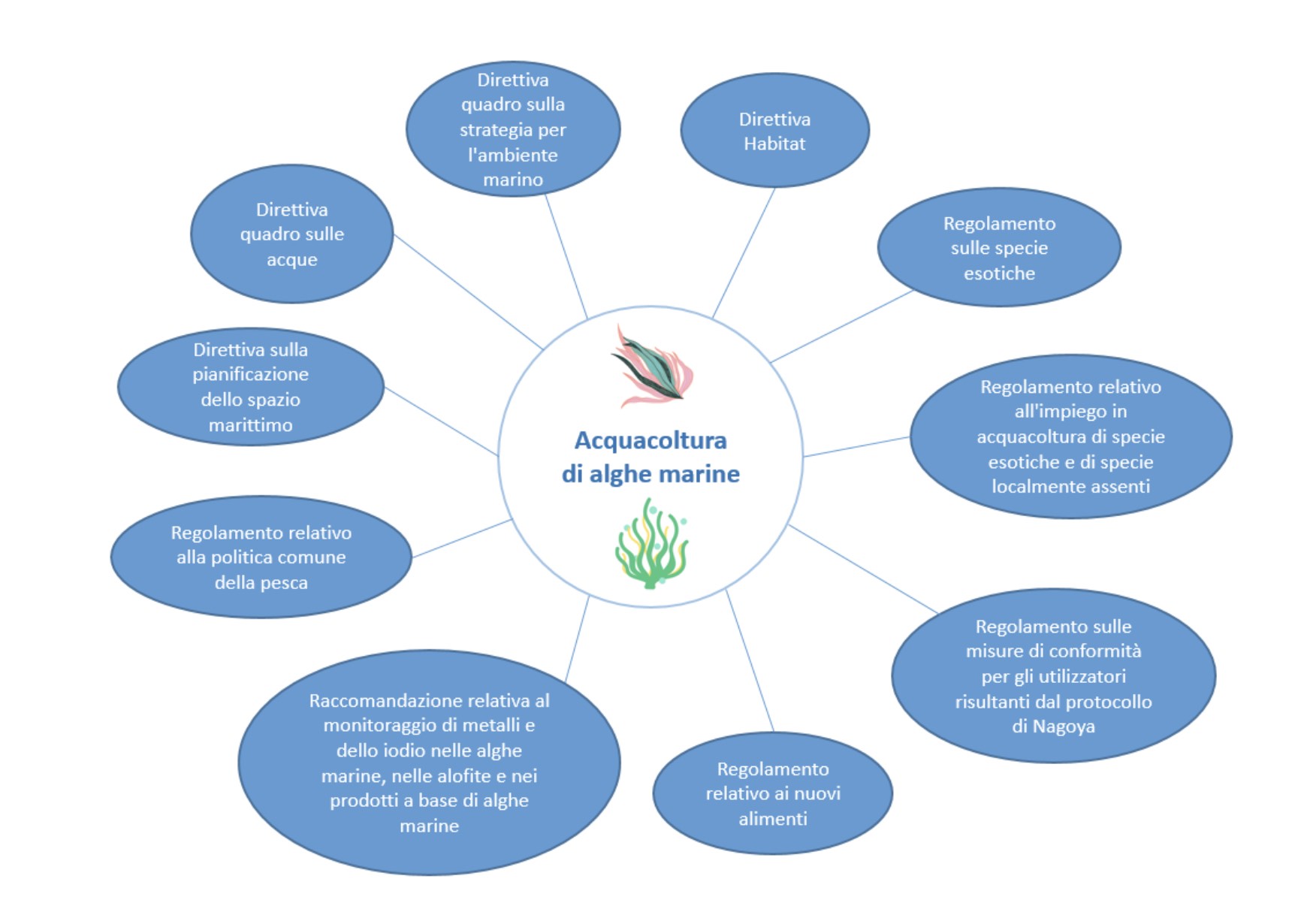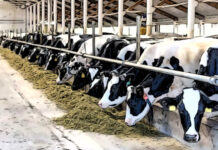Europe can create a robust algae industry to meet growing domestic demand. To support its development, the European Commission adopted the Communication ‘Towards a Strong and Sustainable Algae Sector in the EU‘ on 15.11.22.
The document, which is to be discussed with Parliament and the Council, examines the potential of algae production in Europe and defines 23 actions to be implemented to foster its development.
Algae, European demand on the rise
The European Union is one of the world’s leading importers of seaweed products (554 million euros in 2016). Instead, it produces just 0.3 million tons per year, almost exclusively from wild harvesting, compared to a global production of 36 million tons, mostly from aquaculture.
The growing consumer focus on healthy and sustainable foods means that European demand for seaweed and seaweed products is estimated to increase significantly, to 9 billion euros in 2020.
‘The gradual increase in the vegetarian and vegan population in the EU, currently estimated at about 75 million people, and increased consumer concern for the environment and health will lead to an increase in demand for plant-based food and non-food products, including those made from algae‘, the European Commission predicts.
The microalgae race
In fact, seaweed is a healthy, low-calorie food that is also ideal for those on a vegan or vegetarian diet. They are low in fat and rich in dietary fiber, micronutrients and bioactive compounds. Some species are also known for their particularly high protein content.
Microalgae are equally valued by European consumers. European demand for chlorella and spirulina in particular is growing.
Chlorella and spirulina, the superfood-superstars
Chlorella, as we have seen, is distinguished by a high protein content and an important concentration of beta-glucans, prebiotic fibers effective in reducing so-called ‘bad cholesterol’ (LDL) in the blood, reducing free radicals, and stimulating the immune system. An annual European market growth of 6.4 percent by 2025 is expected for this microalgae.
Spirulina, ‘the blue-green microalga,’ is actually a cyanobacterium. It contains the highest concentration of nutrients of any plant food, as we reported in a previous article.
According to the Immagino Observatory(11th edition), in Italy, spirulina is the protagonist of excellent growth in the large-scale retail trade (+49.3), thanks mainly to natural extract supplements and smoothies/shakes. The European market is estimated to grow 8.7 percent annually by 2025.
Non-food use
In addition to food, algae are sought after for various other applications. From functional feeds (e.g., Algatan) to medicines, nutraceuticals, plant biostimulants, packaging, cosmetics, and biofuels.
Formidable ‘scavengers,’ algae are also effective in wastewater treatment. Cultivated in the sea, then, they remove nutrients from aquatic ecosystems, reducing eutrophication, and remove carbon, limiting ocean acidification.
Seaweed cultivation in Europe
The development of a European algae industry is well feasible in the EU’s extensive maritime regions, where significant environmental and socioeconomic benefits would also be deployed. In particular, the Atlantic Ocean and the North Sea offer ideal natural conditions due to their cold and nutrient-rich waters.
Separate discussion concerns microalgae, which can also be produced on land.
What has been done so far by the European Union
The European Commission reviews its activities to date to boost the European algae industry. The Blue Bioeconomy Roadmap released by the Blue Bioeconomy Forum in late 2019 polled stakeholders. Thus, the main obstacles were identified and ad hoc recommendations provided to overcome them, as shown in the figure below.

Numerous algae-related initiatives have also been implemented or planned by the European Commission for the period 2021-2023. These include the ProFuture research project, funded in the Horizon 2020 program, in which the FARE division of our Wiise Srl benefit company is the lead partner in Italy.
In addition to EU funds for research and innovation (Horizon Europe and its predecessor Horizon 2020) and various activities aimed at spreading knowledge about algae, the following initiatives contribute to the promotion of the sector:
– EU4Algae project for a European collaborative platform of stakeholders in the algae sector,
–“Biocircular Europe” joint venture,
– investments in the algae sector made possible by the European Maritime and Fisheries Fund and the European Regional Development Fund,
– business support mechanisms related to the blue economy(Blue Invest, the aquaculture assistance mechanism).
The 23 actions to support the European algae industry
The resolution of the above obstacles to the development of an effective algae sector in the European Union is entrusted by the European Commission to 23 actions specifically aimed at
1) Improve the governance framework and regulations;
2) Improve the business environment;
(3) filling gaps in knowledge, research, technology and innovation; and
4) Increase social awareness and market acceptance of seaweed and seaweed products in the EU.
1) Improve the governance framework and regulations.
Some EU regulations are currently applicable to the cultivation of seaweed at sea or seaweed on land, as shown in the image below.

In areas where there is no harmonized regulatory framework, however, there is great fragmentation. Think about licensing, access to marine space, species to be cultivated. In order to overcome these obstacles and foster the growth of a robust European algae industry, ‘the European Commission intends to
1 – Develop, starting in 2023 and in close cooperation with relevant stakeholders, a new set of tools for algae producers;
2 – work with member states to facilitate access to marine space, identify optimal sites for seaweed cultivation, and incorporate marine algiculture and marine space multi-use into marine space management plans;
3 – develop, by the end of 2026, together with the European Committee for Standardization (CEN), standard methods for testing, quantification and extraction of algal ingredients and contaminants;
4 – establish together with CEN, by the end of 2026, standards on algae-based bio fuels and a certification methodology for such biofuel products to be used in various transport sectors, particularly in heavy road, air and sea transport;
5 – Evaluate, as of 2023, the market potential, efficiency and safety of algae-based materials when used in fertilizers and the need to amend the EU Fertilizer Products Regulation (EU) 2019/1009 to include algae-based materials.
Commission calls on member states to simplify licensing procedures and governance at national level for algae cultivation‘.
2) Support the improvement of the business environment
The growth of a European algae industry also requires support for the entrepreneurial fabric. To achieve this goal,‘the Commission intends:
6 – study the algae market and propose, starting in 2023 and together with the algae industry, market stimulus mechanisms for the purpose of supporting and promoting technology transfer from research to market;
7 – Establish, by the end of 2024 and on the basis of good practices, indicators regarding feeds and other relevant information, specific guidelines aimed at promoting the replacement of fish-based feeds with algae-based feeds;
8 – collaborate with the algae industry and member states in order to:
(a) Identify viable and safe alternatives to the use of nutrients and CO2 from various sources for microalgae cultivation and organic certification;
(b) Promote theextraction of nutrients from algal biomass;
(c) Support the assessment of environmental and climate impacts of seaweed cultivation and production over the life cycle, considering the development of indicators and monitoring methodologies to measure the environmental impact and sustainability of seaweed cultivation;
9 – fund one or more pilot projects in 2023/2024 to support the reorientation of fishermen’s career path from fishing to regenerative mariculture;
10 – Expand targeted support for SMEs and innovative projects in the algae sector through the more far-reaching activities under the BlueInvest platform;
11 – Facilitate, starting in 2023, cooperation between sea basins and between macroregions by promoting innovative interregional partnerships (e.g., on the blue bioeconomy, essentially targeting algae), through smart specialization strategies and the 3S‘ sustainable blue economy platform.
3) Closing gaps in knowledge, data, technology and innovation
Technological developments, innovation and better knowledge are key to boosting regenerative algae cultivation and production in the EU. The macro chapter of interventions proposed by the European Commission are as follows.
3.1) Knowledge
12 – Include knowledge of the algae sector in the EU aquaculture assistance mechanism by the end of 2023;
13 – Conduct, by the end of 2025 and in collaboration with stakeholders, a study aimed at deepening knowledge of the climate change mitigation opportunities offered by seaweeds and the role of seaweeds as blue carbon sinks;
14 – Evaluate, by the end of 2025 and in collaboration with researchers and academics, EU-level policy options regarding the conservation of seaweed biodiversity, maintaining and documenting European seaweed varieties in a centralized biobank network or database;
15 – initiate, starting in 2023 and subject to the opinion of the European Food Safety Authority, discussions on the definition of the maximum levels of contaminants and iodine in seaweed and/or on the adoption of a new monitoring recommendation for seaweed species for which insufficient data are available as to the presence of contaminants to allow maximum levels to be set;
16 – to study, starting in 2023 and in cooperation with member states, existing monitoring programs and available data on the collection of wild seaweed and shore-deposited algae on EU coasts.
3.2) Technological developments and innovation
17 – support, through Horizon Europe (Horizon Europe) and other EU research programs, the development of innovative and improved algae processing systems and new methods of producing high-value compounds traditionally obtained from algae (e.g., biorefineries, precision fermentation, acellular systems), processing algae to make circular products of biological origin for multiple applications;
18 – support, together with member states and through Horizon Europe and other EU research programs, the development of systems (integrated multi-tropic aquaculture (IMTA), multi-purpose marine space, offshore cultivation, photobioreactors, hydroponic algae cultivation, etc.) or methods (e.g., cellular mariculture and macroalgae in tanks) of improved and augmentable algiculture in order to address the technical limitations of current macroalgae and microalgae production systems;
19 – address the specific technological and systemic challenges of algae-derived biofuels and identify measures for their market deployment in the context of Horizon Europe.
3.3) Data
20 – prepare, starting in 2023, an overview of the availability of data on algae (e.g., on production, employment, turnover, and other socioeconomic aspects) and make a recommendation on the centralization of sources of such data.
4) Increase social awareness and market acceptance of seaweed and seaweed products
Europeans are beginning to appreciate the nutritional qualities of algae and their use in cosmetics. On the other hand, they are still uninformed about the crop-related benefits, viz.
– The regeneration of marine ecosystems,
– The creation of low-carbon products,
– job creation in the blue economy, that is, in the European algae industry supply chain.
To raise this awareness, which is a harbinger of further demand, the European Commission believes the following actions are necessary.
21 – Promote, starting from 2023, consumer awareness through:
(a) Ananalysis of consumer behavior and preferences regarding the perception of seaweed products;
(b) the initiation of one or more European and/or, where appropriate, regional or local evidence-based communication campaign(s) to promote the variety of applications and benefits of algae products;
22 – raise the sustainability profile of algae products in the EU framework for thesustainability labeling of food products, including with reference to marketing standards for fishery and aquaculture products and initiatives regarding green public procurement under the ”From Producer to Consumer” strategy (
Farm to Fork
);
23 – promote, starting in 2023 and together with the EU4Ocean platform and member states, awareness-raising actions for schools and universities on the blue bioeconomy and innovative solutions for regenerative aquaculture.
By the end of 2027, the European Commission will prepare a report evaluating the progress made in implementing the 23 actions required for the development of a European algae industry.
Professional journalist since January 1995, he has worked for newspapers (Il Messaggero, Paese Sera, La Stampa) and periodicals (NumeroUno, Il Salvagente). She is the author of journalistic surveys on food, she has published the book "Reading labels to know what we eat".








